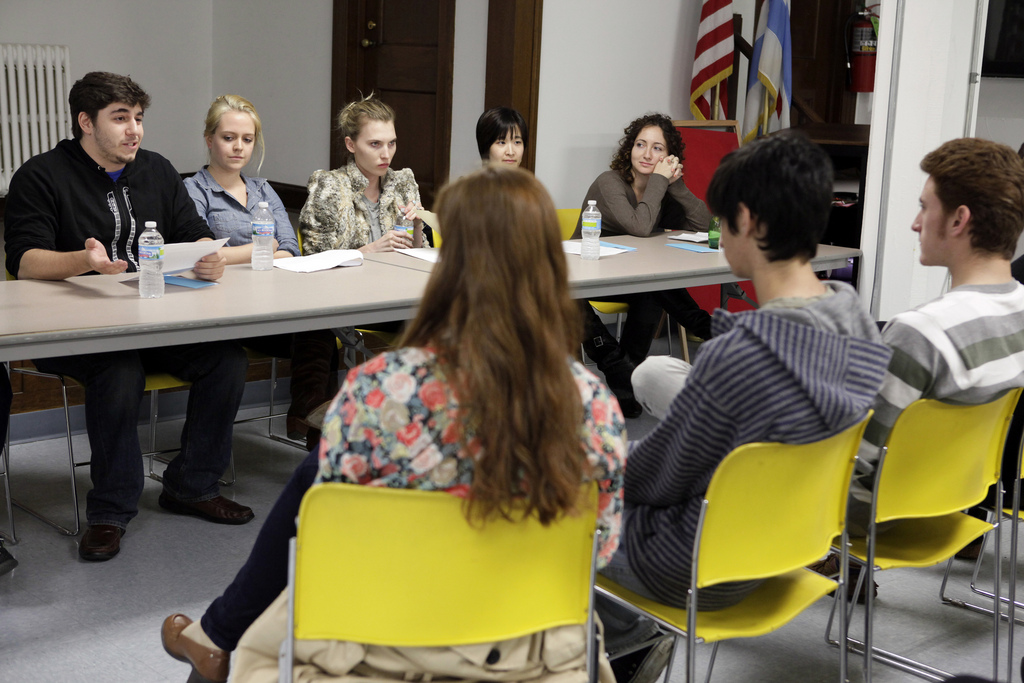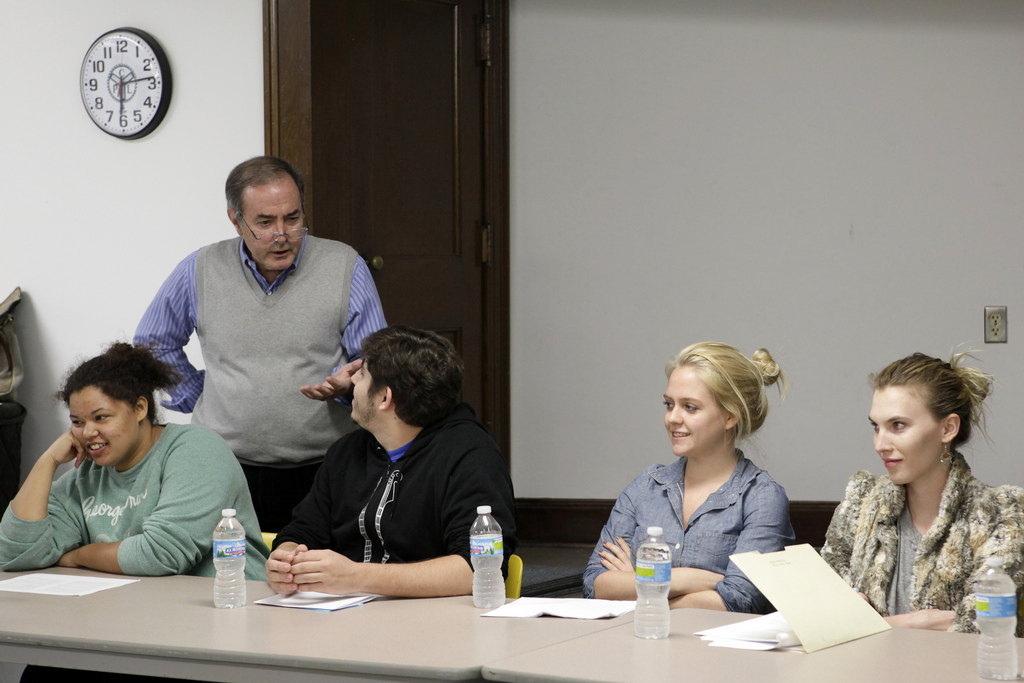At Your Local Library: Imagining A Place for Chicago Literature
by Krissy Rogahn

When we think of the Chicago literary scene, it's not likely that we think of public library basements, with the community knitting circle next door and toddlers discovering Dr. Seuss overhead. But that is just the place five emerging University of Chicago fiction writers found themselves on October 26, gathered in the auditorium of Blackstone Library to read their work for an audience of community members and students. The reading was co-sponsored by the University of Chicago Committee on Creative Writing and the Friends of Blackstone Library, as part of the Despres Family Memorial Lecture Series, which brings esteemed and aspiring writers to the library, encouraging conversation between the local and wider Chicago literary community.
Chicago born-and-bred Tribune journalist Rick Kogan hosted the event, urging the five new writers to continue their noble craft, even in the face of pressing economic and social concerns. The featured readers were University of Chicago undergraduates Sophie Werely, Allison Bulger, and Rachel Miller, MAPH student Adam Rosenthal, and PhD student Marianna Staroselsky.

Their fiction pieces, most being selections from much longer works or novels in progress, spanned genres, styles, and--since literature can admit no bounds--even included an a cappella portion of Celine Dion's 1999 hit single "That's the Way It Is." Though diverse in content, all readings were alike in sophistication. Rosenthal's piece was a humorous meditation on the role of the writer as witness at the end of all things, when reality comes to reckon with fable and "the world starts to end in a culmination of ever apocalypse story around." Miller, easing into a conversational narrative voice, read about the limits of friendship when two adolescent boys come to face an attempted suicide, while Wereley read about small towns and murderous mermaids, and Staroselsky parodied conceptions of bodily femininity. After the writers had finished, Kogan praised them for their distinction--referring both to the uniqueness and the cultivation of written voice.
To round out the hour, he asked each young writer to share his or her own philosophy of and relationship to writing, asking the canonical question, "Why do you write?" Students highlighted the healing properties of writing, or their own creative impulses. As Staroselsky puts it, "You can be Tourettic by law and Freudian slip like it's your job. It's such a fantastic excuse to be as socially inappropriate and uncensored as you like, it's a beautiful space really!" For Rosenthal, the answer was just another question: "What else is there?"

The event also urged these young writers to think about reading as a practice. According to Miller, giving students the opportunity to participate in a public literature forum extends the experiences of the classroom and the workshop into a new setting: "Reading your work in front of other people is like an instant writing workshop: you know exactly what falls flat and what works as soon as you start reading your sentences. It's great to hear what other students are working on, and it's also really helpful to see how the work that you've been doing translates outside of workshop."
As young writers, it should sadden us to reflect that in our present literary climate reading one's work has become alienated from the act of writing it. We must work to change those popular conceptions of the "reading" that have reduced it to a gathering of eccentric intellectuals, munching cheese, drinking bad wine, and exchanging words like fifth-graders exchange secret notes. Ask anyone: the space of the reading is a closed-door hovel of creative clique. Beneath the thick-framed glasses and coffee-stained manuscripts, writers are only preaching to the ever-dwindling choir. But what can we really do about it?
The space of the public library surely deserves our notice. If it is true that the culture of creative writing at the University of Chicago has begun to take on a bit of that musty stasis of the Regenstein bookstacks, perhaps what it needs is a good spray of the public librarian's perfume. Maybe it needs to get out and mingle a little with the people of Hyde Park who don't have the experience of "the Core" or "Critical Perspectives" to guarantee uninspired conversations, to signify a community that has been thrust upon us. Maybe it needs to remind itself of the young and the old. The venue of the Blackstone library, hand in hand with the department of Creative Writing, offered UChicago writers that chance on Wednesday.
The Library tells an origin story resonant with that of the University--opened fin de siècle in 1904 with a private donation by a wealthy benefactor (founder of the Union Stock Yards), it became the first branch library in the Chicago Public Library System. Today, it stands out on 49th Street and South Lake Park as a curious token of its classicist and cosmopolitan past, with a domed temple architecture modeled after the Merchant Tailors Building at the 1893 World Columbian Exhibition, as well as the Erechtheum of the Acropolis. A patron, walking into the library, can look up at the thematic murals on "Literature," "Science," "Art," and "Labor" that line the rotunda. This all raises the important question: can community members use such a space, such a strange embodiment of Chicago's imagination of its own enlightened past, to imagine a new space for Chicago literature?
The short answer is yes. They can use that space and read there. They can use public libraries to help break literature out of its bookish trappings. It is clear--readings all over the city of Chicago can attest to the fact--that the movement of fiction by spoken word is one means toward building a vibrant literary community. What else is there?
See what Rick Kogan has to say about Chicago and its public libraries: http://www.chicagotribune.com/entertainment/ct-ae-1009-kogan-sidewalks-20111007,0,6813433.column
Visit the Friends of Blackstone Library at http://friendsofblackstone.wordpress.com/

Leave a comment